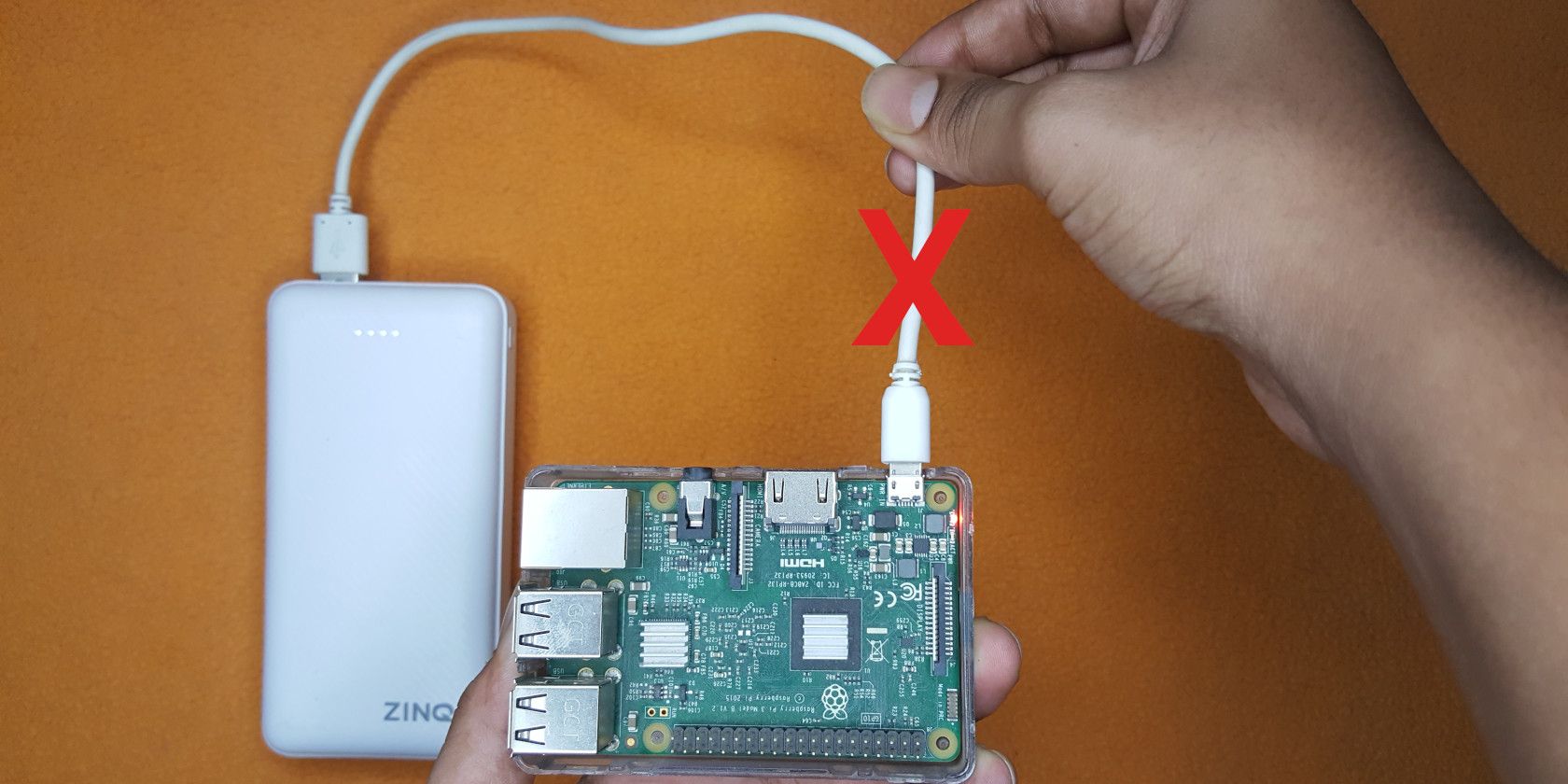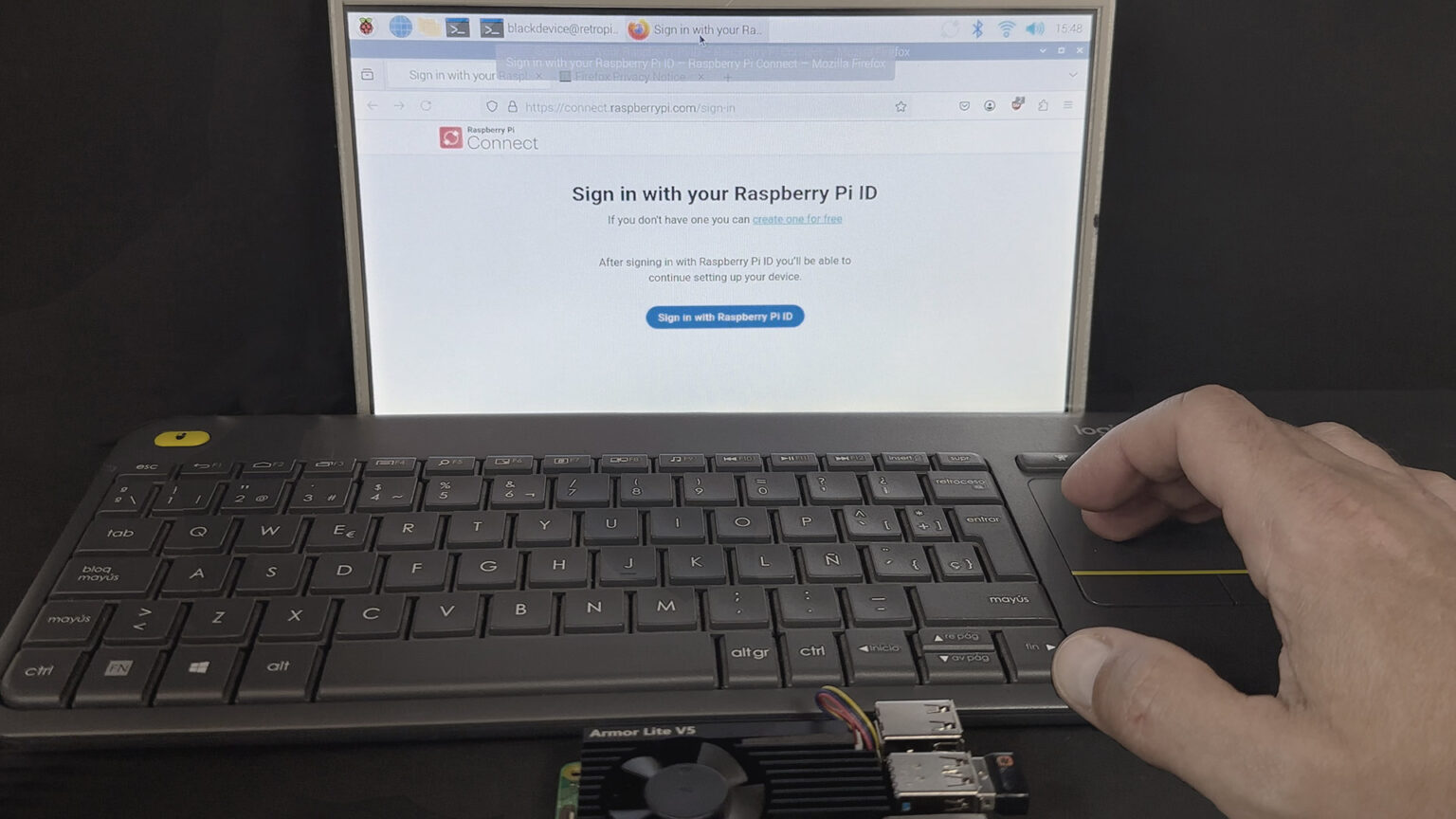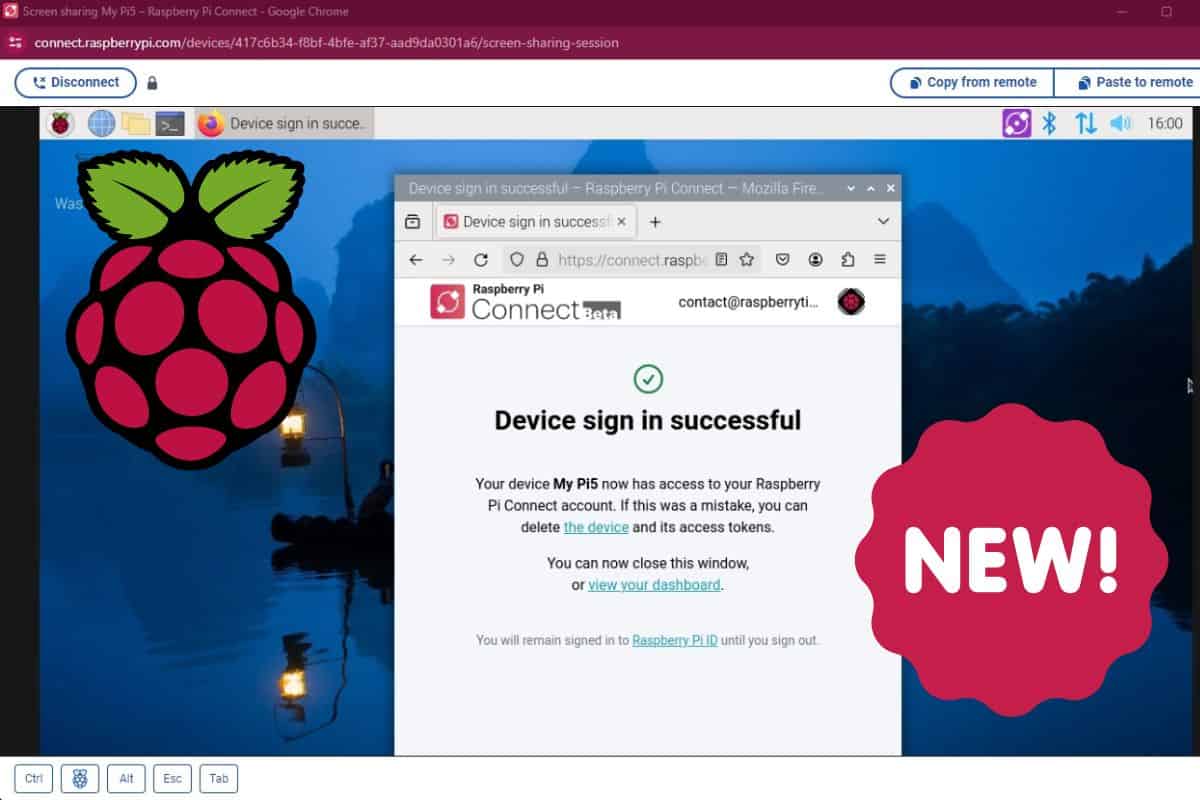How To Remotely Connect To Raspberry Pi - Your Anywhere Access
Detail Author:
- Name : Thelma Ziemann
- Username : wschowalter
- Email : okon.sandy@davis.info
- Birthdate : 1977-08-23
- Address : 466 Bosco Ferry Suite 092 East Jayceebury, WA 03150-9333
- Phone : +1 (781) 993-3667
- Company : Crist, West and Nienow
- Job : Office and Administrative Support Worker
- Bio : Reiciendis itaque deleniti tempore et fugit aut. Sit magnam repellendus dolore consequatur tempora et. Iste iure nostrum nihil. Alias et sit et earum nihil voluptatum itaque.
Socials
linkedin:
- url : https://linkedin.com/in/herminia.schaden
- username : herminia.schaden
- bio : Molestiae sequi quis et rem.
- followers : 5787
- following : 2353
tiktok:
- url : https://tiktok.com/@schadenh
- username : schadenh
- bio : Architecto rerum vitae ipsum reprehenderit est.
- followers : 6450
- following : 1763
facebook:
- url : https://facebook.com/herminia7641
- username : herminia7641
- bio : Exercitationem consequatur beatae voluptas molestiae suscipit quas omnis.
- followers : 3446
- following : 1907
instagram:
- url : https://instagram.com/schaden1992
- username : schaden1992
- bio : Facere blanditiis tenetur id ipsam esse sapiente. Fugiat ad quaerat quo animi.
- followers : 2802
- following : 2100
- What is a Raspberry Pi and why connect to it remotely?
- How to Remotely Connect to Raspberry Pi - Getting Ready
- Connecting from Afar - The SSH Method for how to remotely connect to Raspberry Pi
- Visual Control - VNC for how to remotely connect to Raspberry Pi
- Other Ways to Connect - Beyond SSH and VNC
Having a small computer like the Raspberry Pi can open up a lot of possibilities for projects and learning, yet keeping it tethered to a monitor, keyboard, and mouse can feel a bit limiting. Imagine being able to work with your Pi from any spot in your home, or even when you are away. This kind of freedom is something many people seek in their professional lives, looking for careers that let them work from any location, giving them a lot of personal flexibility. Your Raspberry Pi, in a way, can offer a similar kind of freedom when you set it up for remote access.
This idea of accessing things from a distance is quite useful, whether it is finding a job that lets you work from your favorite coffee shop or getting to your tiny computer without being right there. People often want to manage their small devices, like a Raspberry Pi, without needing to be physically present. This desire for control from afar is a common thread that runs through many aspects of our daily lives, from how we find work to how we manage our personal tech setups, you know.
Learning how to connect to your Raspberry Pi without being next to it is a skill that makes your projects much more adaptable. It means you can put your Pi in a hidden spot, perhaps running a home automation task or serving files, and still have full command over it. This guide will walk you through the steps to set up these connections, making sure you can get to your Pi whenever you need, practically from anywhere, so.
What is a Raspberry Pi and why connect to it remotely?
A Raspberry Pi is a very small computer, often about the size of a credit card. It is a single-board computer, meaning everything it needs to run is on one circuit board. People use these little machines for all sorts of things, from learning about coding to building robots, setting up media centers, or even creating home servers. They are quite versatile, offering a lot of computing power in a tiny package, you know.
The reason someone might want to connect to a Raspberry Pi from a distance is quite clear once you start using one. Perhaps your Pi is tucked away in a cupboard, running a specific program for your home. Maybe it is placed in a spot where it is not easy to reach, or you just prefer to work on it from your main computer without needing to swap cables or move things around. Just as many people look for careers that let them work from any spot, giving them a lot of personal freedom, your small computer can offer a similar kind of freedom. This kind of access makes managing your projects much simpler, allowing you to make changes or check on things without physical interaction, is that not great?
Being able to control your Pi from another computer, like your laptop or even a phone, means you do not have to keep a monitor, keyboard, and mouse connected to it all the time. This frees up space and lets you place your Pi where it makes the most sense for its task, rather than where it is convenient to plug in accessories. It is a way to get the most out of your little computer without the fuss of extra gear, basically.
How to Remotely Connect to Raspberry Pi - Getting Ready
Before you can start connecting to your Raspberry Pi from a different machine, there are a few things you need to make sure are in order. These initial steps are important for a smooth connection experience. Think of it as preparing your workspace before you begin a new task; having everything ready makes the job much easier to complete, you know.
The first step involves making sure your Raspberry Pi has a way to talk to other devices on a network. This means it needs to be hooked up to your home network, either through a wire or wirelessly. Without this basic connection, your other computer will not be able to find or communicate with your Pi at all, so.
Does your Raspberry Pi have network access?
For your Raspberry Pi to be reachable from another computer, it needs to be part of a network. This could be your home Wi-Fi network or a wired connection directly to your router. If your Pi is already set up and running, it likely has some form of network access. If you are just starting out with a new Pi, you will need to get it connected to your network first, which is a fairly straightforward process, you know.
If you prefer a wired connection, you simply plug an Ethernet cable from your Raspberry Pi into an open port on your router. This is often the most stable way to connect, providing a consistent link. For a wireless connection, you will need to configure your Pi to join your Wi-Fi network. This usually involves selecting your network name and typing in your password, which you can do when you first set up the Pi with a screen and keyboard, or sometimes even before you boot it up by editing a file on the memory card, so.
Enabling SSH for how to remotely connect to Raspberry Pi
One of the most common ways to connect to your Raspberry Pi from a distance is through something called SSH, which stands for Secure Shell. This allows you to open a text-based command window on your Pi from another computer. To use SSH, you need to make sure it is turned on, or "enabled," on your Raspberry Pi, is that not right?
If you are using a recent version of the Raspberry Pi operating system, called Raspberry Pi OS, SSH might not be turned on by default for security reasons. You can turn it on in a few ways. One common way is to go into the Raspberry Pi Configuration tool from the desktop environment. You would look for the "Interfaces" tab and make sure the SSH option is set to "Enabled." This is a pretty simple process if you have a screen connected to your Pi at the start, you know.
Another way to enable SSH, especially if you are setting up a Pi without a screen, is to place an empty file named `ssh` (with no file extension) onto the boot partition of your SD card. When the Raspberry Pi starts up, it looks for this file and, if it finds it, automatically turns on the SSH service. This is a very handy trick for what is called "headless" setups, meaning no screen is attached, basically.
Connecting from Afar - The SSH Method for how to remotely connect to Raspberry Pi
Once SSH is enabled on your Raspberry Pi and it is connected to your network, you are ready to make your first remote connection. SSH provides a text-based way to interact with your Pi, letting you type commands as if you were sitting right in front of it. This method is very efficient for many tasks, like running programs, moving files, or changing settings, you know.
The basic idea is that your main computer will send a request to your Raspberry Pi over the network, asking to start an SSH session. Your Pi will then respond, and if everything checks out, you will get a command line prompt from your Pi appearing on your main computer's screen. It is a bit like having a direct phone line to your Pi's brain, allowing you to give it instructions from a distance, so.
What tools do you need for SSH connection?
To connect to your Raspberry Pi using SSH, you will need a program on your main computer that can speak the SSH language. If you are using a computer with a system like Linux or macOS, you already have a tool built-in for this. It is called the "Terminal." You can open it up and type in the commands directly. This makes things quite simple for those operating systems, you know.
For people using a Windows computer, you will need to get a separate program. The most common and widely used program for SSH connections on Windows is called PuTTY. It is a free tool that you can download and install. Once installed, PuTTY gives you a window where you can type in your Raspberry Pi's network address and then connect to it. It is a fairly straightforward program to use, and many people find it quite helpful for this purpose, basically.
Regardless of the tool you use, you will also need to know your Raspberry Pi's network address, which is often called its IP address. This is a series of numbers that uniquely identifies your Pi on your home network. You can find this address by typing a command like `hostname -I` into your Pi's own terminal if you have a screen connected, or by checking your router's list of connected devices, that is usually how it works.
Once you have your IP address, connecting is as simple as opening your Terminal or PuTTY and typing a command like `ssh pi@your_pi_ip_address`. You will be asked for your Pi's password, and then, if everything is correct, you will see the command prompt of your Raspberry Pi appear on your screen. From there, you can type commands just as if you were sitting in front of the Pi, giving you full control, so.
Visual Control - VNC for how to remotely connect to Raspberry Pi
While SSH is excellent for text-based commands, sometimes you need to see what is happening on your Raspberry Pi's desktop. Perhaps you are working with a graphical program, or you just prefer to navigate with a mouse and icons. This is where VNC, which stands for Virtual Network Computing, comes into play. VNC lets you see and interact with your Pi's graphical desktop environment from another computer, just as if you had a monitor plugged in, you know.
VNC works by sending images of your Pi's screen to your main computer and sending your mouse and keyboard actions back to the Pi. It is a bit like looking through a window into your Pi's desktop and being able to reach in and move things around. This visual connection can be very helpful for certain kinds of projects or for people who are more comfortable with a graphical interface than with typing commands, basically.
Setting up VNC on your Raspberry Pi
To use VNC, you will need to install and set up a VNC server program on your Raspberry Pi. The Raspberry Pi OS often comes with a VNC server already available, which makes the setup process fairly simple. You can usually find it in the "Preferences" menu under "Raspberry Pi Configuration," similar to how you enabled SSH, is that not convenient?
In the Raspberry Pi Configuration tool, you would go to the "Interfaces" tab and make sure "VNC" is set to "Enabled." This will start the VNC server software on your Pi. You might also want to set a password for your VNC connection, which adds a layer of protection, making sure only authorized people can see your Pi's screen. It is a good practice to always use a password for remote access tools, you know.
Viewing your Pi's desktop - how to remotely connect to Raspberry Pi with VNC
Once the VNC server is running on your Raspberry Pi, you will need a VNC client program on your main computer to view and control the desktop. There are many VNC client programs available for different operating systems, like RealVNC Viewer, TightVNC, or others. You can download and install one that suits your computer, so.
After installing the VNC client, you will open it and enter the IP address of your Raspberry Pi. The client program will then try to connect to the VNC server running on your Pi. If you set a password, you will be asked to enter it. Once the connection is made, you should see your Raspberry Pi's desktop appear in a window on your main computer. You can then use your mouse and keyboard to interact with it just as if you were sitting directly in front of the Pi, basically.
This visual access makes it very easy to work with graphical applications, browse the web on your Pi, or simply see the status of your system without needing a physical display. It is a powerful way to manage your Pi, especially for tasks that benefit from a visual interface, you know.
Other Ways to Connect - Beyond SSH and VNC
While SSH and VNC are the most common ways to connect to your Raspberry Pi from a distance, there are other methods available depending on what you need to do. For example, if you just want to move files back and forth between your main computer and your Pi, you might use something called SFTP, which stands for SSH File Transfer Protocol. This uses the same secure connection as SSH but is designed specifically for moving files, you know.
There are also tools that let you create a more traditional "remote desktop" experience, similar to what you might find with other operating systems. These can sometimes offer a smoother visual experience than VNC for certain setups, though they might require a bit more configuration. The choice of method often comes down to what you are trying to achieve and your comfort level with different kinds of tools, basically.
Can you access your Raspberry Pi from outside your home network?
So far, we have talked about connecting to your Raspberry Pi from another computer on the same home network. But what if you are away from home, perhaps at a coffee shop or a friend's house, and you want to connect to your Pi? This is a bit more involved, but it is certainly possible, so.
To connect to your Raspberry Pi from outside your home network, you typically need to set up something called "port forwarding" on your home router. This tells your router to send specific types of incoming connections from the internet to your Raspberry Pi. It is like telling your home's front door to direct all mail for a specific person directly to their room, even if they are not the only one living there, you know.
Setting up port forwarding requires some care, as it can open up your home network to the outside world. You need to make sure your Pi is secure with strong passwords, and that you only open the ports you absolutely need. For a bit more security, some people use a Virtual Private Network, or VPN, to create a secure tunnel back to their home network before connecting to their Pi. This adds an extra layer of protection, making sure your connection is private and safe, basically.
Understanding how to remotely connect to your Raspberry Pi gives you a lot of freedom and flexibility, much like finding a job that lets you work from any spot in the world. Whether you are using simple text commands with SSH, seeing the full desktop with VNC, or moving files with SFTP, the ability to control your Pi from afar means your projects are no longer tied to one physical location. This guide has covered the basic steps for setting up these connections, making sure your Raspberry Pi is accessible when you need it, from wherever you are, so.

How to Shut Down a Raspberry Pi Remotely

Connect to your Raspberry Pi remotely with Raspberry Pi Connect

Introducing Raspberry Pi Connect: Easy remote access to your Pi